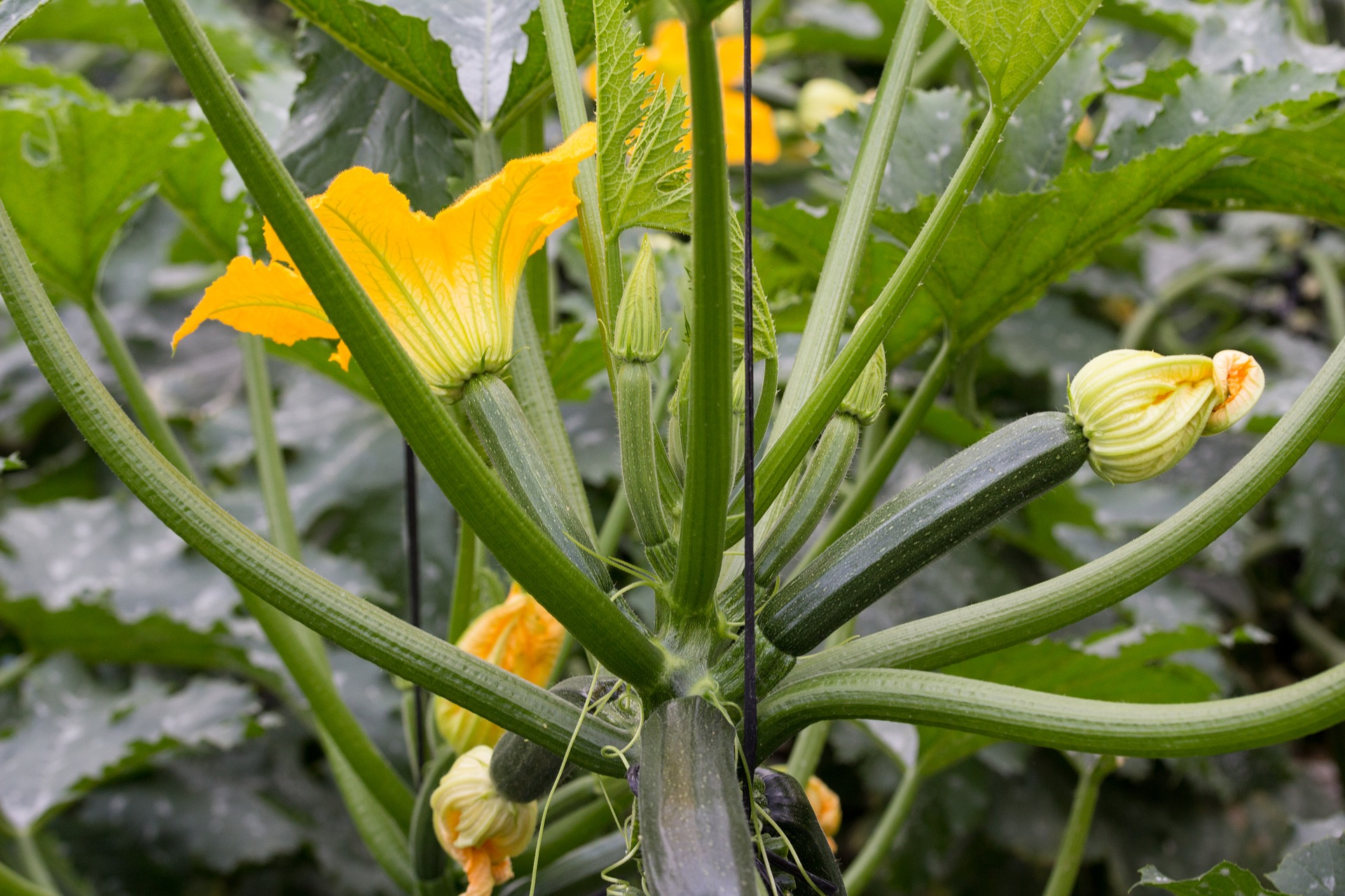
Growing Zucchini: How to Plant, Care for & Harvest
Zucchini are easy to grow and usually produce a large yield. It is therefore particularly suitable for beginners and self-sufficient growers. Here you can find out everything from propagating zucchinis and caring for them to harvesting them and what you can do to prevent mildew on zucchinis.
This Article Contains:
- Growing Zucchini: Everything You Need to Know
- Location & Soil
- Sowing Zucchini: Tips for Propagating and Direct Sowing
- Planting Out Zucchini: Timing and Spacing
- Zucchini in the Mixed Vegetable Patch: Ideas and Examples
- Watering and Caring for Zucchini
- Zucchini: Diseases & Pests
- Harvesting Zucchini: How to Do It
- Storing Zucchini Correctly
- Processing and Preserving Zucchini
- Frequently Asked Questions About Growing Zucchinis
Quick Overview
Growing Zucchini: Location, Temperature & Soil
- Light: Courgettes require a lot of light and should be grown in a bed that is as sunny as possible.
- Water: The water requirement of this originally tropical plant is also very high. It should never be dry, otherwise the fruit will turn bitter.
- Temperature: Due to their tropical origin, zucchinis need a lot of warmth and should never be planted outdoors before the Ice Saints.
- Nutrients: Courgettes are heavy feeders and therefore need a lot of nutrients.
- Soil: The small pumpkin prefers to grow in nutrient-rich, humus-rich soil.
Planting Zucchini: Spacing & Sowing Depth
- Planting distance: 100 cm/39 in - one plant needs approx. 1 - 2 m2/1.2 - 2.4 yd2 of space to develop properly.
- Planting depth: 3 cm/1.2 in
Growing Zucchini: Everything You Need to Know
The zucchini belongs to the pumpkin family (Cucurbitaceae) and originally comes from Central and South America. As a fruit, the zucchini (Cucurbita pepo) is a mixture of its close relatives Cucumber and Pumpkin. The name zucchini comes from the Italian word "zucca", which means "small pumpkin".
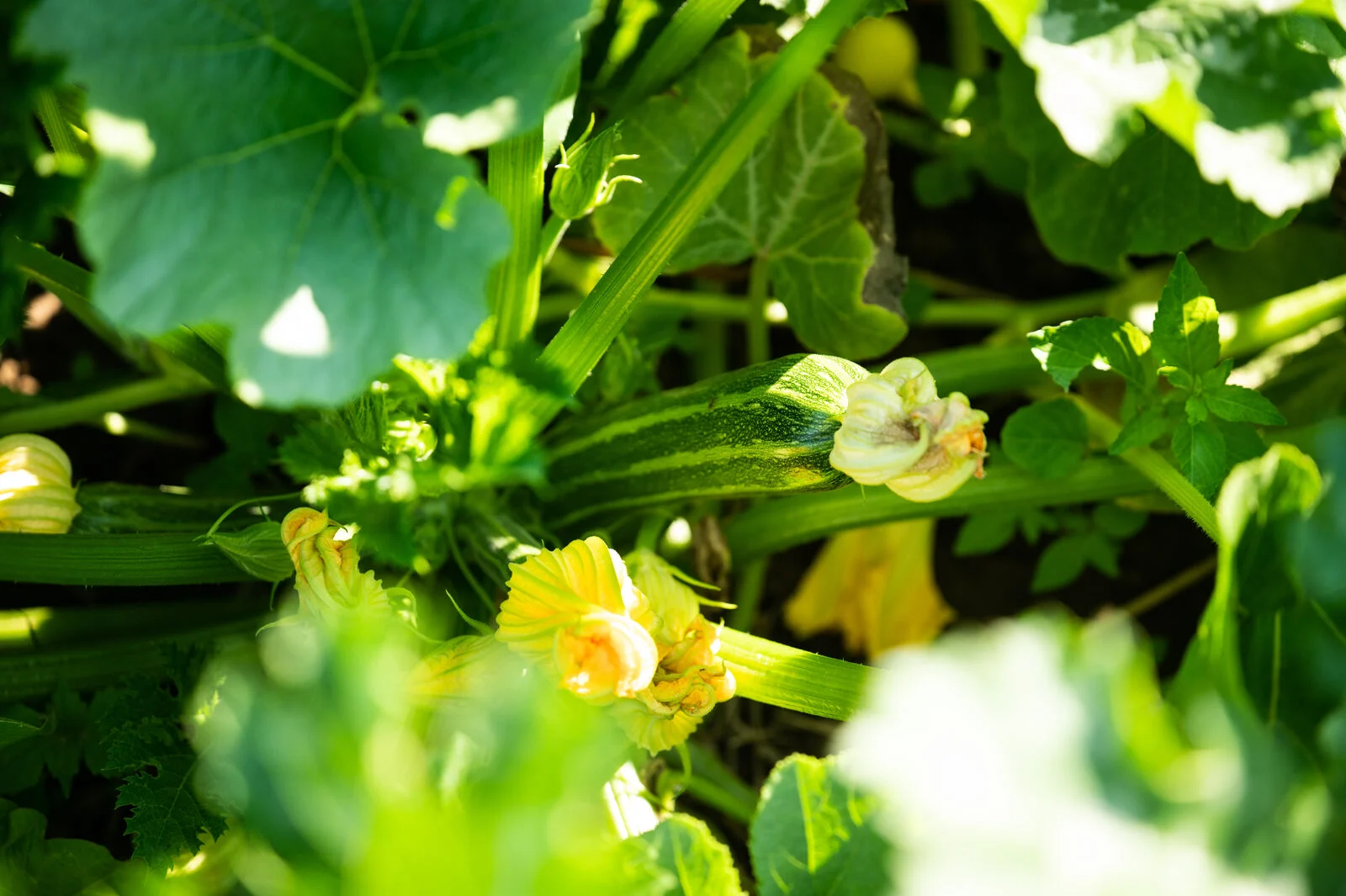
Zucchini plants are annual, usually bushy in growth and have large leaves on long stalks. The stalks are hairy and can therefore prick the skin. Thick gardening gloves can offer protection here. The large, yellow flowers of the zucchini unfurl into a bright star when they open. There are both male and female flowers on a plant, which is called monoecious. The male flowers sit on a long, thin stem and are often sold on the market as a flower cluster. The female flowers, on the other hand, have a short, thick stalk on which the fruits later form. The fruits of the zucchini plant vary depending on the variety: there are both elongated and round zucchinis. In addition to classic green varieties, there are also yellow, white, striped and purple varieties. You can find an Overview of the Different Zucchini Varieties in this article.
Location & Soil
Due to their tropical origin, zucchinis love warmth and evenly moist soil. They require a lot of light and should grow in a bed that is as sunny as possible because they are frost-sensitive and heat-loving. This requirement can be better met with a mulch film. In the open, short-term film or fleece coverings are suitable for better growth and development. The plant's water requirement is also very high. Zucchini plants are heavy feeders and therefore have high nutrient requirements. They prefer to grow in humus-rich, easily warmed soil with a loose structure and good water retention capacity. However, zucchinis do not like high levels of salt (i.e. chloride) in the soil.
Can You Grow Zucchini on the Compost?
Contrary to some recommendations, you should not grow zucchini plants on the compost , as they leach it out too much. At most, a plant may be placed at the bottom of the compost, where it can use the nutrients that have been flushed out. The large leaves also shade the compost heap and protect it from strong sunlight so that it doesn't dry out too much.
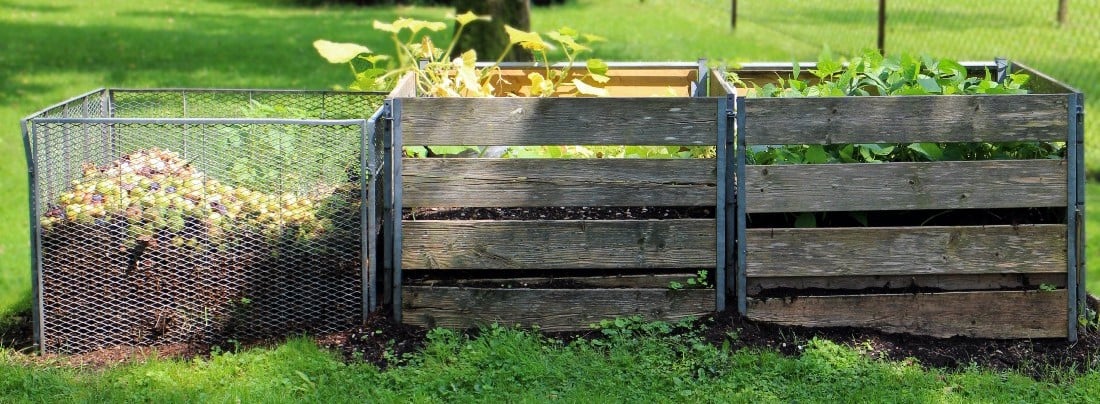
Can You Plant Zucchini on the Balcony?
You can also grow zucchini on the patio or balcony. When growing them in pots, however, you should make sure that you provide them with sufficient nutrients! Bushy-growing varieties such as the yellow zucchini "Gold Rush" are particularly suitable for pots. Alternatively, there are also zucchini varieties with tendrils that can grow up a climbing aid. This way of growing zucchinis is particularly space-saving. You can find more Ideas and Tips for Growing Zucchinis Vertically With Examples of Mixed Cultivation Planting Plans in Pots here in the article.
Sowing Zucchini: Tips for Propagating and Direct Sowing
Propagate Zucchini Indoors on the Windowsill
Propagating zucchinis in pots is very simple, as they are relatively hardy and grow quickly. It is best to use pots with a diameter of approx. 8 cm/3.1 in. It is therefore sufficient to sow the first seeds in pots on the windowsill from April. Place one seed per pot approx. 3 cm/1.2 in deep in the soil and moisten the soil well. The first green tips should appear within a week. You can also use pressed soil pots in the greenhouse. The ideal temperature is 18 to 20 ° C/64 to 68 ° F, but should not fall below 15 ° C/59 ° F. Over the next few weeks, make sure that the plants always have enough light so that they do not stretch out unnecessarily. In the case of pre-grown plants, the root ball should be well rooted and the cotyledons should be well developed or the plant should have one to two leaves.
Sow Zucchini Directly Into the Vegetable Patch
Zucchini plants are usually grown on the windowsill in our latitudes. However, you can also sow zucchini seeds directly. The earliest direct sowing is possible in mild regions from the beginning of May. Germination takes about two weeks, so the first cotyledons do not appear until the middle of the month. By this time, the last night frosts should be over so that the young plants are not damaged by the cold. Place two to three seeds 1 m/1.1 yd apart. Protect the zucchini plants with a warming fleece.

Planting Out Zucchini: Timing and Spacing
After the Ice Saints, you can then plant out the young plants in the prepared vegetable patch. For higher yields, a shovelful of horse manure (alternatively chicken manure, etc.) can be mixed into the planting hole when planting. Then cover the manure with some soil from the pit and place the young plant on top. If you haven't already prepared the bed, you can work some compost into the soil when planting.
A single zucchini plant can grow to 1 - 2 m2/1.2 - 2.4 yd2, so make sure you leave enough space between it and other plants when planting it in the bed. The large leaves cast a lot of shade and can restrict the growth of other vegetable plants in the vicinity. However, you are on the safe side with a planting distance of 1 m /1.1 yd. Zucchini plants do need a lot of space, but depending on the variety, 1 - 2 plants are enough to cover the needs of an entire family.
Zucchini in the Mixed Vegetable Patch: Ideas and Examples
Planting plan examples and ideas. To inspire your zucchini patch, we have a few digital garden plans for you.
You can find out more about Zucchini in Mixed Cultivation and an Overview of Good and Bad Companion Plants in this article. In addition to tips on succession planting and crop rotation, we have also prepared some digital bed plans for your mixed cultivation planting plan with zucchinis.

Plan Your Vegetable Patch
With our Bed Planner you can easily plan a colorful mixed crop. Good and bad companion plants are shown right away, and you get crop rotation tips!
Plan a Vegetable PatchWatering and Caring for Zucchini
Zucchini are heavy feeders and therefore have a high nutrient requirement. In order for the zucchini plants to develop well, the bed should be prepared in autumn or early spring with plenty of compost, organic fertilizer and a mulch cover. Green manuring the previous summer can also help to create a nutritious base for the hungry zucchini plants. During the growing season, fertilize two to three times with diluted nettle slurry two to three times (ratio approx. 1:10). If you wish, you can also mulch around the plant with half-rotted compost.
Consistent soil moisture is important for zucchini plants. The plant needs the most water at the start of fruit growth and throughout the harvest period. Drought can lead to stunted growth and consequently to bitter and deformed fruits. The zucchini makes some of the work easier for you: the plant's large leaves provide shade for the soil and protect it from drying out. A layer of mulch can also help to keep the soil around the plant moist.
It is best to always water your plant from below and in the morning. This will prevent damp leaves and fungal diseases such as mildew. Zucchinis require the most nutrients from the end of June to mid-August and should be fertilized in two doses. Either mulch foil or use a hand rake to help with weeds. As a rule, however, weeds are not a major problem due to the large leaves.
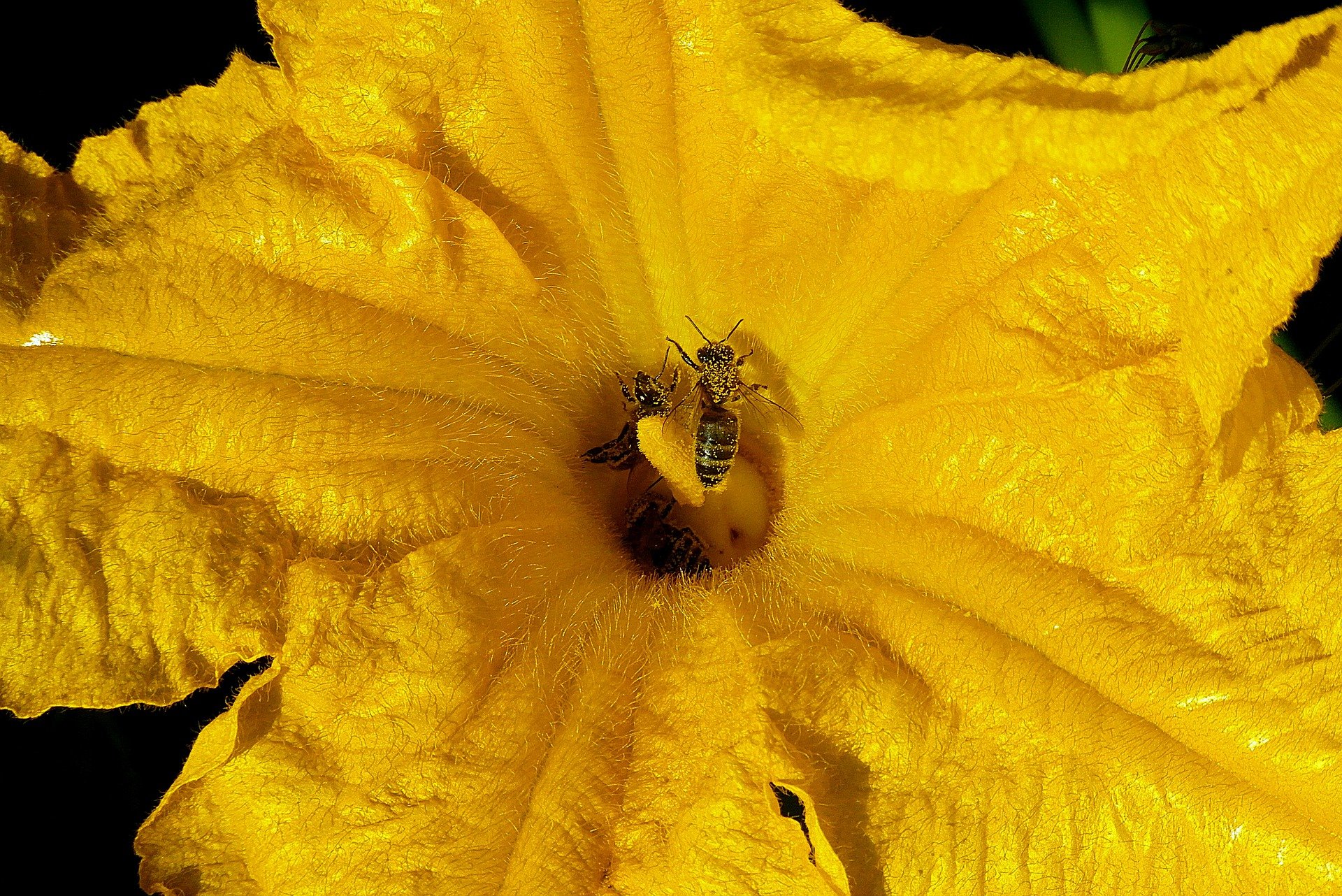
Zucchini: Diseases & Pests
Zucchini are relatively susceptible to fungal diseases (e.g. powdery mildew or gray mold). Other common diseases are watermelon mosaic virus, zucchini yellow mosaic virus and cucumber mosaic virus, all of which are transmitted by aphids. To prevent virus transmission, keep a sufficient distance from cucumbers and pumpkins. A lack of calcium and cold, wet weather can lead to blossom end rot, in which case you should remove the plant directly from the bed. In natural plant protection, horsetail broth is often sprayed against fungal infestation. This can also be used as a preventative measure on a pre-infested bed or before planting out a susceptible crop. Biological plant protection products usually need to be applied several times and at regular intervals; in the case of heavy infestation, you should even spray daily. Cut off heavily infested leaves with a sharp knife and dispose of them in the organic waste.
Our tip: Never dispose of diseased plant parts in the compost, otherwise this can also become infected!
Fighting and Preventing Mildew on Zucchini
Mealy coating on the leaves, early drying out. Powdery mildew also spreads in sunny weather. Preventive: mildew-resistant varieties, airy location, avoid over-fertilization, remove diseased plant parts, spray horsetail or garlic tea, mixed cultivation with garlic. Acute: sulphur preparations from the trade.
Recognizing and Combating Grey Mould
Gray mould coating on leaves and fruit, the tissue dies off. Gray mould mainly attacks weak plants, so all measures that promote healthy growth are important. Preventive measures: Regular soil cultivation, airy soil, mulching with straw, avoiding over-fertilization, garlic as an intercrop. Acute: Spray horsetail tea for several days in succession, destroy diseased plant parts.
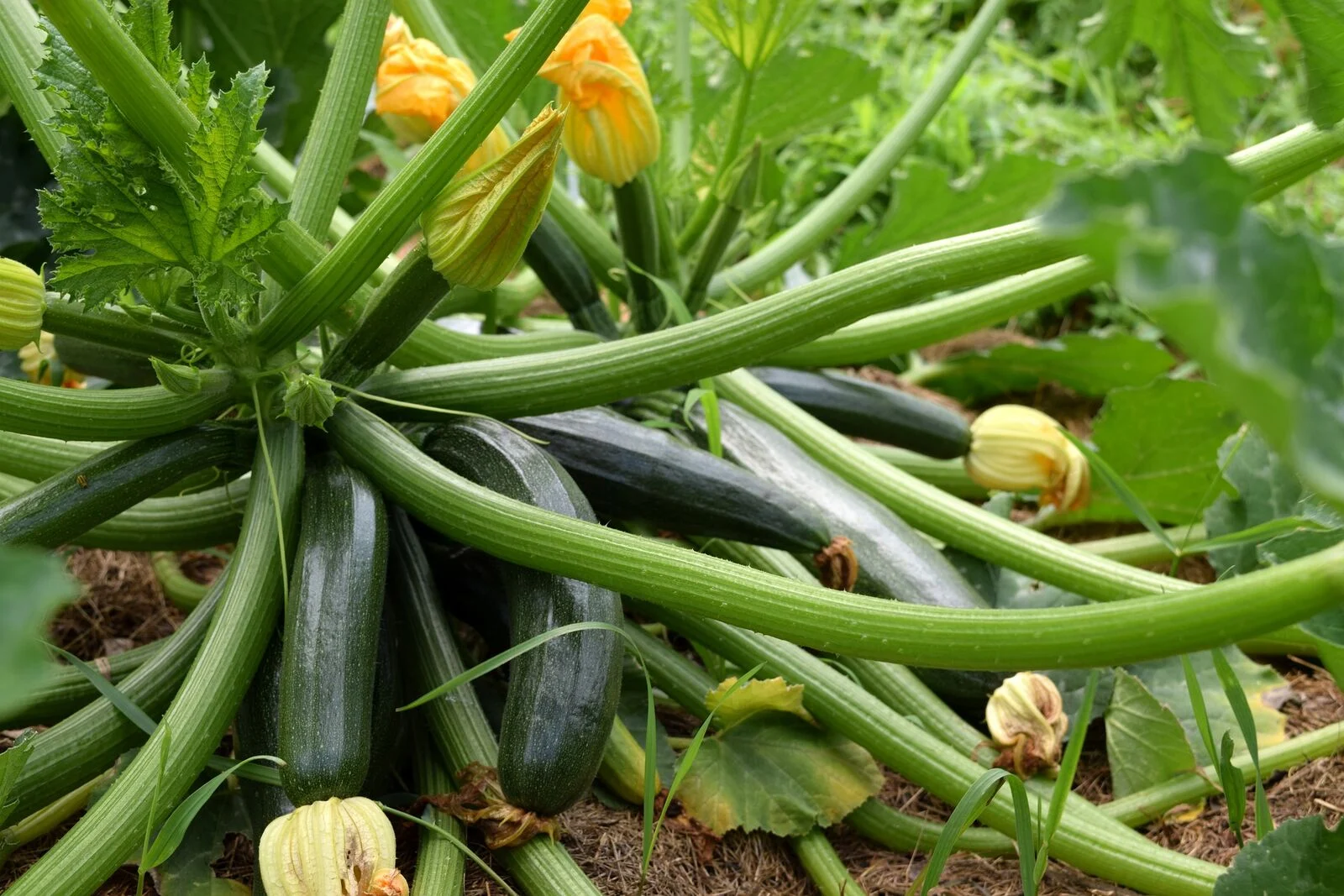
Harvesting Zucchini: How to Do It
Whether raw, roasted or grilled, zucchinis can be used in a variety of ways and are always delicious and healthy. If the zucchini finds good conditions, it will also develop its rampant lushness here. During the main growing season, you'll probably be hard pressed to find new fruits. During this time, give them away and preserve as much as you can!
When Can You Harvest Zucchini?
The harvest period runs from July to October after a cultivation period of 50 to 60 days. Zucchini taste particularly delicious when they are harvested young. It is therefore best to harvest them when they are around 10 - 20 cm/3.9 - 7.9 in long. Early harvesting also increases the yield, as the plant can invest its energy directly in a new fruit. The optimum harvest time for round varieties is when they are 12 cm/4.7 in in diameter. If the fruits are not harvested regularly, the plant usually only produces three to five very large fruits. However, these are not as tasty, the skin becomes firmer and they eventually become woody. When harvesting the zucchinis, simply cut them off with a sharp knife to avoid damaging the plant. The stem is left on the fruit.
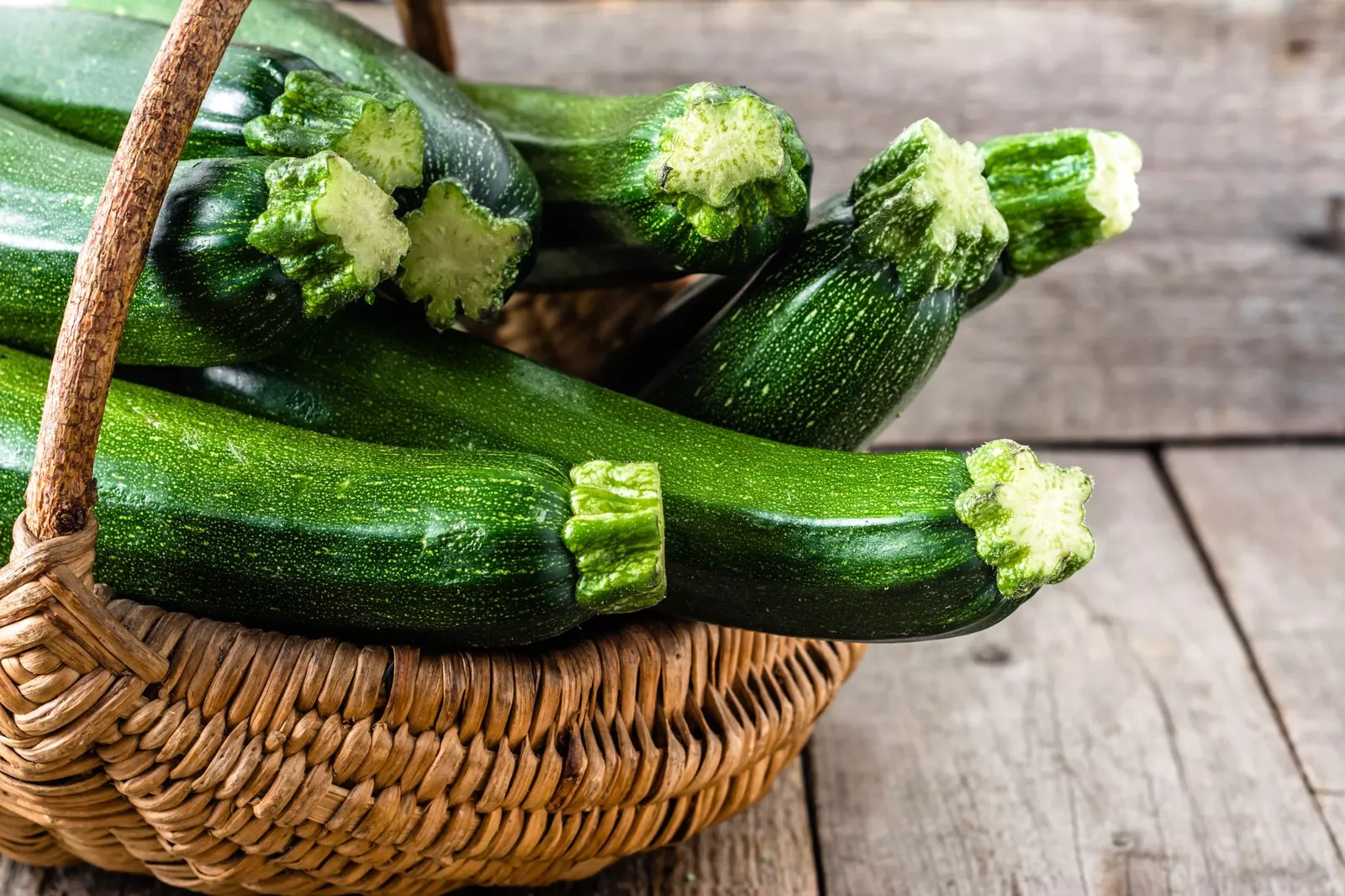
Storing Zucchini Correctly
It is best to store zucchinis in a shady and well-ventilated place. However, make sure that they are not stored next to apples or tomatoes, as zucchinis will quickly become wrinkled and mushy. Zucchinis, just like cucumbers, are sensitive to the cold and should therefore not be stored in the fridge. The optimum temperature is 7 to 10 ° C/44.6 to 50 ° F and 90 - 95% humidity.
How Long Can You Store Zucchini?
Zucchinis will keep for at least a week in a cool place. Large fruits can even be stored for several weeks. The larger the zucchini, the longer it will keep. The larger the zucchini, the more its skin resembles that of a pumpkin: It becomes thicker and leatherier so that the fruit does not dry out so easily. Undamaged and large fruits can therefore be kept for a very long time if stored in a cool place. As long as the zucchini remains firm, it is generally still edible.
Processing and Preserving Zucchini
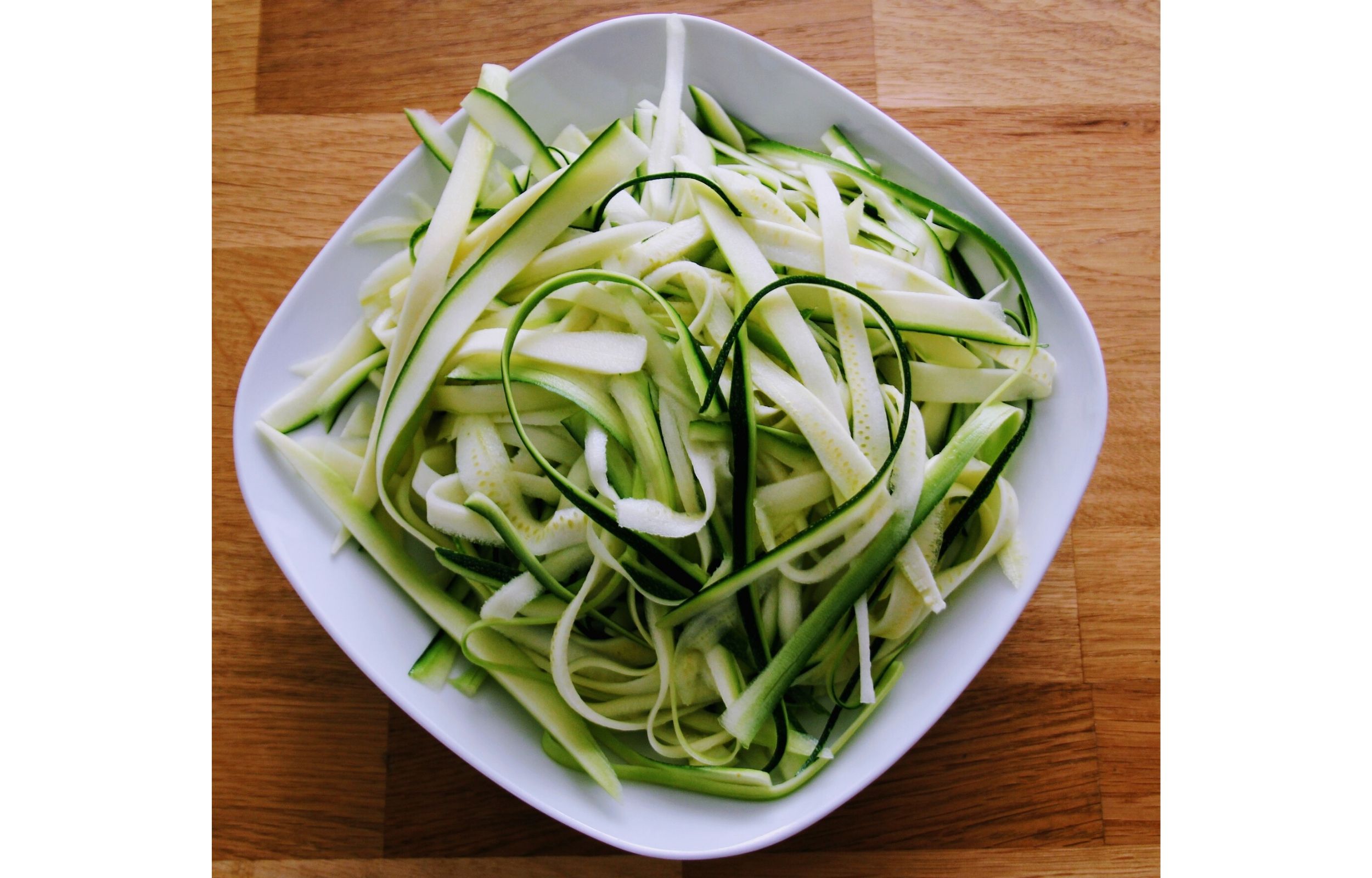
Cut into strips, breaded and baked , zucchini fries are also prepared in a flash, this tasty snack is great as finger food and can be served with a creamy dip. You can also make your own fresh zucchini noodles with a peeler! They taste best when mixed with normal pasta. The large, edible flowers are also a very special delicacy. These are often stuffed and fried, roasted or baked, depending on your preference.
If you find a huge leg after your vacation, you can of course still use it. Sliced, stuffed and braised zucchinis are also delicious at this stage. In general, zucchinis can be prepared in a variety of ways: Raw or cooked, peeled or unpeeled, they can be fried, steamed, braised, grilled or fried in fat.
You can also preserve your zucchini harvest very easily: they can be frozen or cooked in jars. If you have a plentiful harvest, it's worth preserving the seasonal vegetables for the winter so you can eat them all year round. Whether as antipasti or sauces, creativity is required here again! You can find More Tips and Instructions on How to Preserve Zucchinis here.
If you have any questions or comments, please write to us at [email protected]. Would you like to receive helpful gardening tips all year round and plan your own beds optimally? Then register here or download the Fryd app for Android or iOS.
Fryd - Your digital bed planner

Annabell
Annabell is studying agricultural biology at the University of Hohenheim. She also enjoys gardening in her private life, spends a lot of time in nature and loves to be creative.
Learn MoreCurrent Topics in the Community

The seeds have arrived.
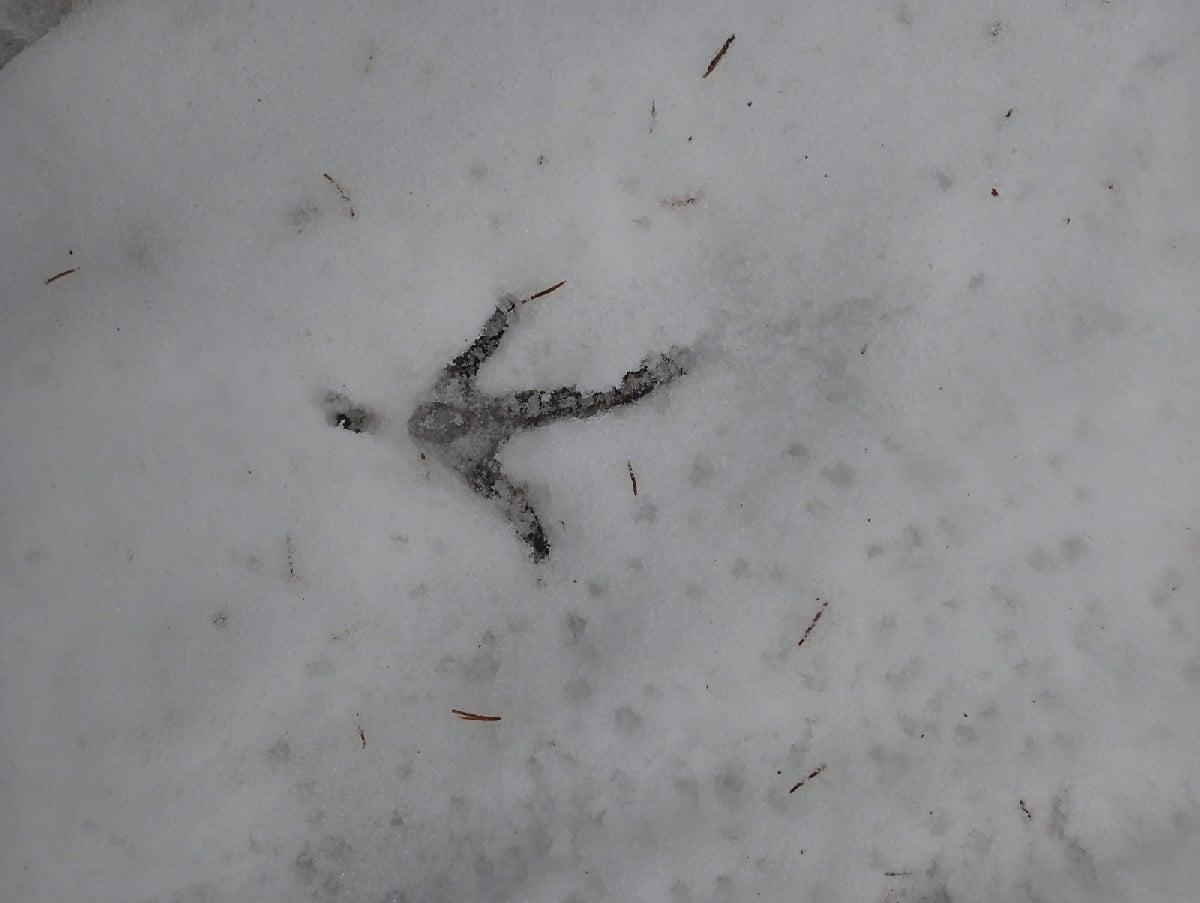
Which animal left this track? #riddle

Liked 1 times
The night before last it was -12 degrees, today it's +8 degrees during the day, crazy. I took advantage of the warm weather and cleaned up my blackberries and tied them up again😊
Popular Articles

Overwintering Parsley: How to Do It Successfully

How to Grow Lettuce in Winter: Varieties, Sowing, Harvesting

Growing Sage Plant: Tips for Sowing and Harvesting

What Herbs Can Be Planted Together?

Create & Design a Permaculture Garden

Overwintering Plants: Tubs, Pots and Raised Beds

Pruning, Fertilizing & Propagating Currants: Care Tips

Pruning Raspberries: How to Do It

Vegetable Garden With Greenhouse: How to Use Greenhouse Effect

Winterizing Beds and the Garden: How to Do It
FAQ
Zucchinis can be planted outdoors after the Ice Saints, from mid-May. The soil temperature should be at least 15 to 18 ° C/59 to 64 ° F, as zucchinis like it warm. There should also be no risk of frost.
Can you grow zucchinis on compost?
Zucchinis should not be planted directly on compost, as they are hungry and may extract too many nutrients from the compost. It is better to plant zucchinis at the bottom of the compost.
How much space does a zucchini plant need?
A zucchini plant can take up to 1 m2/1.2 yd2. So make sure you keep enough distance from the other plants, otherwise they will be shaded by the zucchini's large leaves.
What helps with mildew on zucchinis?
There are some preventative measures you can take: Choose robust varieties and an airy location and avoid over-fertilizing. A mixed culture with garlic or basil is also effective against mildew. Horsetail or garlic tea helps in the event of an infestation.